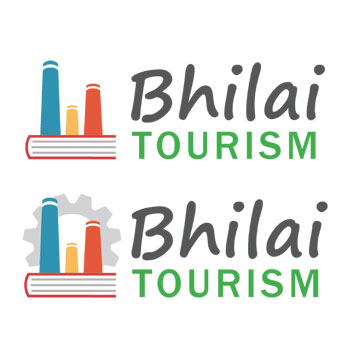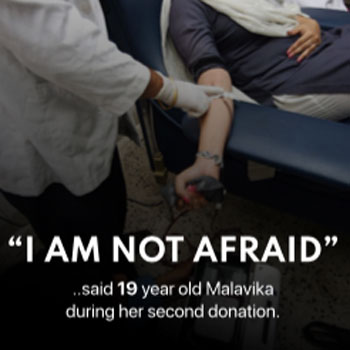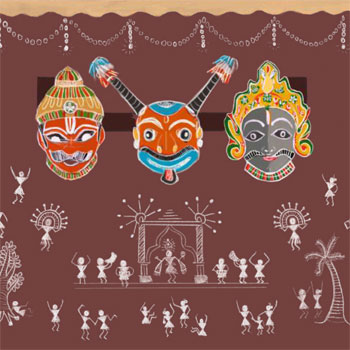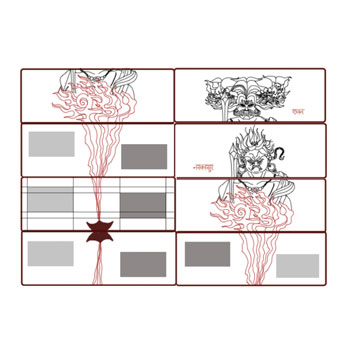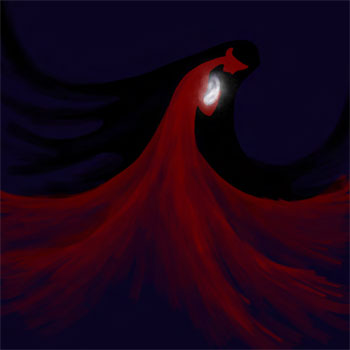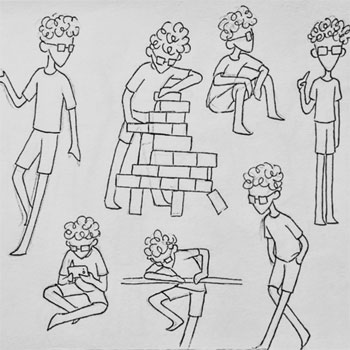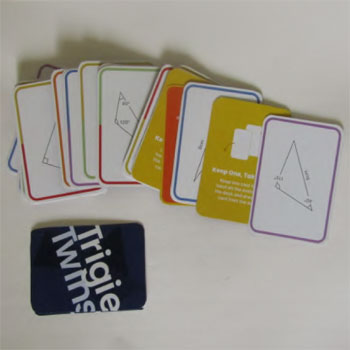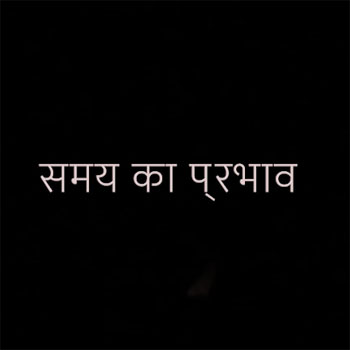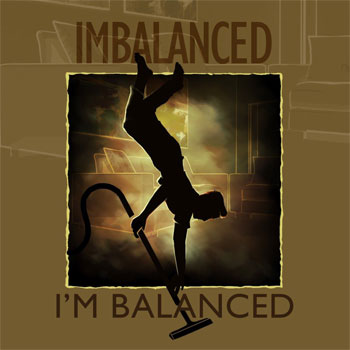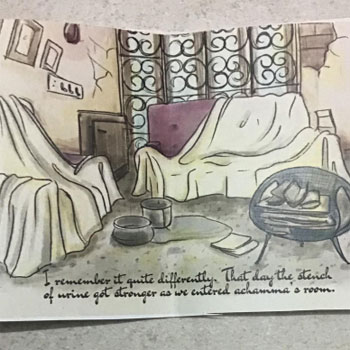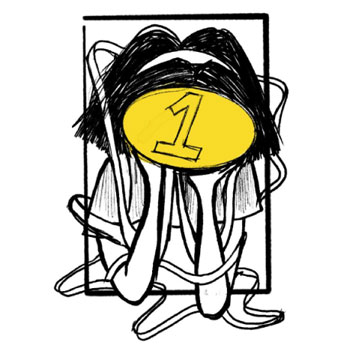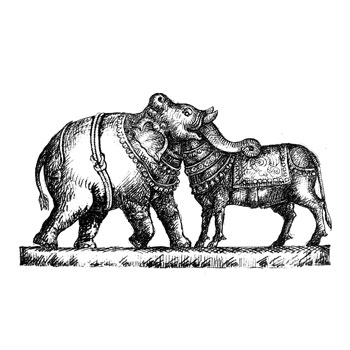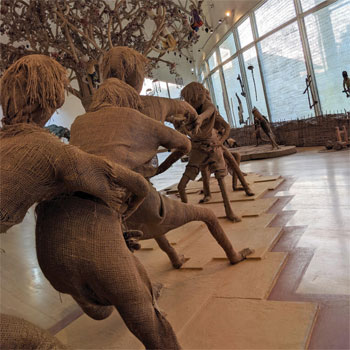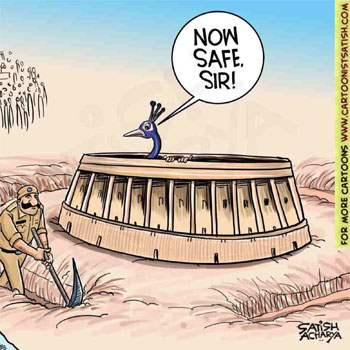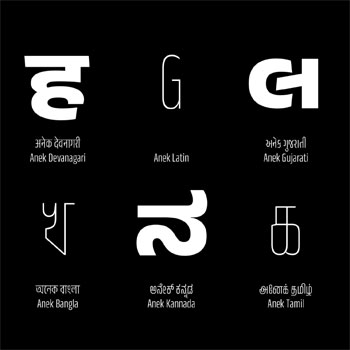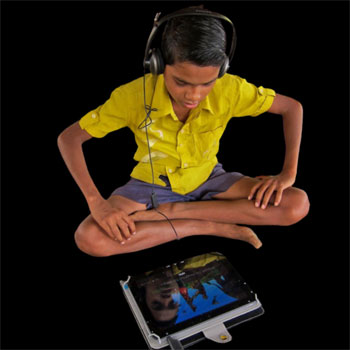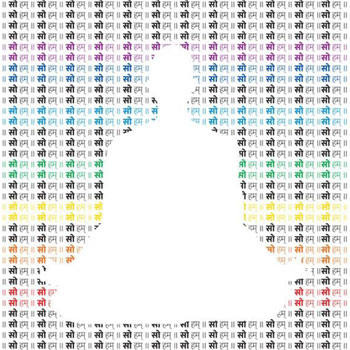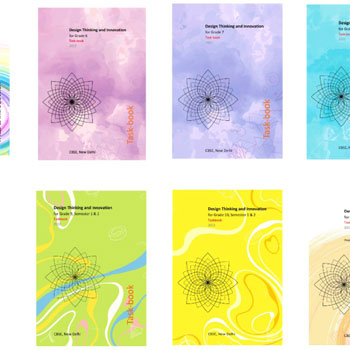Visual Communication 2019-onwards
Batch 2017-2021
(3 items)
Batch 2018-2022
(14 items)
Batch 2016-2020
(10 items)
Batch
(9 items)
Visual Communication 2019-onwards
2017-2021
(3 items)
Street Sounds
by Akshat D. Hyanki
by Akshat D. Hyanki
People from all around the world travel, work, or do some things daily. These events occur in a variety of locations and are associated with various sounds. The sources of these sounds may be natural, machine-made, or produced by humans. There are many different elements corresponding to the origination of these sounds and how they are produced. In this project, I will document and analyse sounds produced by various sources, which will finally map the sounds during different times.
Details >>Understanding Logo Design
by Akshat D. Hyanki
by Akshat D. Hyanki
A logo is what identifies a company by the use of a symbol, signature, or mark. It doesn’t necessarily have to describe what a business does, but it should represent the story of the brand and company. Logos do not sell the company persay, but over time a logo helps consumers build trust with a company’s products or services. Corporate logos are intended to be the ‘face’ of a company. They are the unique identifier of a company, and through colours, fonts, and images, they provide essential information about a business that allows customers to relate with the company’s core brand. Logos are also a shorthand way of referring to a company in advertising and marketing materials; they provide an anchor point for the various other aspects in a project as well, like fonts, colours, and the design choices. This analogy completely embodies why a strong logo is important. A logo creates an image for your brand, and the more people see your logo, they can start to associate it with your brand. Just like how we associate the “swoosh” logo with Nike, or the “golden arches or M” with McDonalds.
Details >>Local Tourism Promotion
by Akshat D. Hyanki
by Akshat D. Hyanki
Tourism is one of the world’s fastest-growing industries and a major source of foreign exchange earnings and employment for many developing countries. It is vital to many countries well-being because of the income generated by the consumption of goods and services by tourists, the taxes levied on businesses in the tourism industry, and the opportunity for employment and economic advancement by working in the industry. This fundamental is also applicable from city to city.
Details >>2018-2022
(14 items)
Design Strategy to enable more periodic blood donations in India to tackle the current shortage of blood
by Anagha Aneesh
by Anagha Aneesh
India is currently facing a shortage of blood due to the lack of voluntary donors and the lower frequency of periodic donors, as they are concerned about the safety regarding donations after the pandemic. A major fraction of the adult population was found to be unaware of the requirement and the urgency of the situation and often give in to misconceptions leading to no donation. This project aims at understanding how to tackle the high demand and low supply of blood in the country and identify motivations that could aid the situation by studying the common trends and demographics of periodic donors and understanding the level of awareness that people have in this sector. The main objective of the study would be to devise how to bring in more first-time donors and encourage repeated donations to tackle the current shortage of blood in the country. Two types of studies, both qualitative and quantitative, were conducted. The findings from the study were mapped out and overlapped with the findings from existing literature to derive major conclusions.
Details >>Infographic on Warli Festivals being celebrated by their Community
by Drishti Das
by Drishti Das
The project aims to document, classify, and experiment with information visualisation of cultural events in India. In this project, I focus on how the Warli community of Palghar district celebrates their traditional festivals by depicting traditional Warli paintings on their house walls. I started by revisiting and analysing our old project. With the project aim/motivation in mind, I collected more information about their culture through secondary research and organised the data according to the decided relevant factors for the visualisation, then explored some ideas. The final output communicates the ways these festivals are celebrated in Warli culture by depicting the traditional Warli paintings on the walls of their houses, with people and decorations in the background, mimicking their household during that occasion. It serves as a way of exploring their culture for newbies to lightly get introduced to their culture.
Details >>Image Transformation and Representation
by Krishna Nair
by Krishna Nair
Image Transformation and Representation is a visual communication project by Krishna Nair (Batch 2018–2022, IDC, IIT Bombay). The work investigates ways to reinterpret and represent images—transforming them in creative, meaningful ways—likely through digital or media formats. It explores how imagery can be manipulated to convey deeper narratives or alternative readings beyond the surface appearance.
Details >>Multilingual Storytelling
by Krishna Nair
by Krishna Nair
India is a country of many languages. In fact, it is a country that has been divided on the basis of languages. Each of these languages holds within it a treasure trove of knowledge and historical memory. This is reflected in the stories told in these languages. As part of the system design project done last semester, I’d been able to look at language learning within the context of the Indian Education System. The final output of this project was a community publication company for digital and print media called Bhaasha Co. Through this project, I have attempted to take it further and use storytelling as a means to bring people from different linguistic communities together. I was quite keen to bring together multiple languages in the same plot and space. Zines seemed to be an interesting way to achieve this. The use of such a medium that also made artistic collaboration easier fit in quite well with the Bhaasha Co. narrative.
Details >>Online lecture on Design Principles: Visual Semiotics
by Nidhi Deshmukh
by Nidhi Deshmukh
This project aims to teach the basics of semiotics to an online audience in a manner that’s engaging and easy to understand. The task was to structure and conduct an online lecture teaching one basic design principle to students who are just starting out in design. This was to be based on the course we took in our first and second year at IDC. It was necessary to keep the content simple and easy to grasp while being effective and easy to apply. Learning in an online environment takes a toll on the mind and can get boring and exhausting. The project explores creative ways to make online learning interesting and effective by relying on animations, interactive exercises, and a dry sense of humour.
Details >>Exploring narratives depicting morally ambiguous decisions
by Nidhi Deshmukh
by Nidhi Deshmukh
I often get into discussions and arguments with people where I try to understand the motivations behind everything the person says and does—especially when it’s a person with completely opposing views. This project started as a similar exercise to see if I could justify some behaviour that goes against my personal beliefs—to see if it was possible to understand and empathise with a character making unhealthy decisions because of their circumstances. This story treads the dangerous path of moral ambiguity, of what is acceptable and what isn’t in difficult situations. It makes the reader ponder over the uncomfortable decisions the characters must take when pushed into a corner and forced to take desperate actions. In this project, I attempt to break away from my usual visual style and create an immersive illustrated short story.
Details >>Illustrated story on the adolescent and young adult crisis
by Nidhi Deshmukh
by Nidhi Deshmukh
I have always struggled with imagining and planning for the future. I also struggled with all future-related decisions, like academic ones about picking a stream, field of interest, discipline, etc., or personal ones like what I want to do in the long run, where I want to live, etc. These doubts caused me a lot of distress and, eventually, depression and anxiety. I always chalked this up to me being a very cautious and anxious person by nature. I would and still can worry about everything. But in the past few years, I have noticed that such concerns also bother many, if not all, of my peers. It seemed odd how an entire generation of students is struggling to find these answers when their parents and older relatives never found this to be a significant problem and failed to relate to it. Most people learn to overcome this and lead better lives. But some fail to. And there has been an alarming rise in the number of people suffering from such lifestyle-related mental stress and consequential illnesses. The initial idea I started this project with was a very cynical take on our society’s exploitative, consumeristic ways and how that weighs down on the human mind. This idea, I believe, came from a place of great anger and frustration. But as I started this project and dug more deeply into this problem, I realised that there is a lot of anger and frustration already.
Details >>Gangaur festival of Rajasthan
by Niharika Kumawat
by Niharika Kumawat
This project attempts a documentation of the Gangaur festival of Rajasthan and its different aspects and significance. Gangaur is celebrated over 18 days and is one of the major festivals of Rajasthan. This report documents its most important highlights over these 18 days and various processes and important elements associated with it and their significance. There’s also an emphasis on the cultural folklore and songs associated with this festival, which forms an important part of numerous other Hindu festivals. Thus, it’s also an attempt to highlight the cultural vibrancy of Rajasthan as a state. The information and pictures collected and documented are sourced from various research papers, web articles, and from primary research with family and relatives currently celebrating this festival. The project documents an overview of the festival celebrated across the state of Rajasthan, but some of the finer details are based entirely on primary research, like the Pooja Vidhi, and the timeline is more specific to how it’s celebrated in the city of Jaipur. Thus, it might have slight regional variations across different cities. At the end, an infographic based on an illustrated timeline of this festival and its important aspects has also been designed.
Details >>Data Visualisation in Comparative Genomics
by Niharika Kumawat
by Niharika Kumawat
This project aims to deliver a data visualisation around the complex topic of “Comparative Genomics." The aim is to simplify a complex topic as such into a form that can be ingested by the general public with general insights and induce curiosity in them. The outcome is a web interface combining narrative and two interactive visualisations comparing the details of 30 widely known species of animals. A lot of static and dynamic tools exist to visualise genomic data, but most of them are often very complex for any non-field expert user to use. This project aims to offer an entry point to the general audience to get introduced to the field of Comparative Genomics and its basics. Two levels of comparison are undertaken in this project: one is general comparison of basic details with the first visualisation, and the second is comprehensive sequence comparison between the chosen species. The user can explore the details about the species of their interest by interacting with the tool. Genomics and comparative genomics, being a growing field of research, are important topics of interest, knowledge of which is important and can help individuals discover new opportunities in various fields.
Details >>Educational game design based on The Periodic Table
by Niharika Kumawat
by Niharika Kumawat
Chemistry is one of the most disliked science subjects in the Indian School scenario when seen from an understanding and memorization perspective. Students think of chemistry as an abstract realm they have to deal with. Periodic table is an important topic in the chemistry course curriculum, connected to many other topics in chemistry, and involves a lot of memorization. This project delivers an educational board game based on the concepts of “The Periodic Table” targeted at students in grades 9th–12th. Thus, the aim is to provide a tool in the form of a fun and engaging game to help students learn, practice, and memorize. The focus was on coming up with an actually fun game mechanic that motivates the student to play while also feeding them with the knowledge and concepts of the periodic table in a less abstract way. Jr. Mendeleevs is a game based on the periodic table of elements for the students of classes 9th–12th. Players take the role of researchers and compete with each other to solve the problem cards dealt to them and discover the elements based on hints given on the cards. To discover an element, they’ll have to earn and spend the resources and discovery coins given to them. The game can be played at home or school with classmates, siblings, or even parents. Players can also introduce problem cards of their own to increase the difficulty of the game once they’re well equipped with the basics.
Details >>Infant and Maternal Nutrition
by Niharika Mohile
by Niharika Mohile
This report talks about the work I did over the autumn semester of 2021. It starts with an introduction to the topic of Infant and Maternal Nutrition, especially the problems in the area. It then shows my approach to the problems. We read about both primary and secondary data collection through doctors and other professionals in the field, as well as the collection of data from existing solutions. I then talk about my idea for a service design solution and then change course to a smaller solution that deals with videos made by CTARA, a body under IIT Bombay. Finally, I also present some posters I made for the project.
Details >>Visualisations in Affective Neuroscience
by Prita Raut
by Prita Raut
Affective neuroscience is an interdisciplinary field involving neuroscience and psychology where research involving data analysis is paving the way for new findings. This paper tells about the various types of visualisations in the field of affective neuroscience based on the nature of information. Neuroanatomy is of importance in this field, and based on that, the two broad categories identified are spatial and nonspatial visualisations.
Details >>Designing a Game based on Secondary School Mathematics
by Prita Raut
by Prita Raut
Math is a subject that plays a crucial role to help develop analytical and logical reasoning skills. However, it is perceived as a difficult subject by students, and there is fear and anxiety associated with it, which affects the interest students have in studying it. New ways of teaching and learning have come up that attempt to make studying enjoyable. In this project, I have attempted to design a game to practice math in a fun way. TrigieTwins is a board game for students of Std 7th and Std 8th to practice the concepts of properties of triangles and congruence of triangles. In this game, players make pairs of congruent triangles and try to collect groups marked on the board, along with trying to stop their opponent from winning by using power cards. This game can be played in the school with classmates or at home with siblings, friends, or parents. For anyone who doesn’t know the concept of congruence or properties of triangles, a quick revision guide is provided that can be referred to play.
Details >>Science Visualisation: Emotion and Affective Disorders
by Prita Raut
by Prita Raut
Affective neuroscience is an interdisciplinary field involving neuroscience and psychology. This project aims to design a data visualisation to simplify and present some of the research findings in the field of affective neuroscience related to similarities in animals and humans, behaviour and basis in neuroanatomy, and affective disorders in an attempt to explain the scientific reasoning behind them to the general audience through a web-based interactive infographic.
Details >>2016-2020
(10 items)
Samay ka prabhav
by Abhishek Chandra
by Abhishek Chandra
“Samay ka prabhav” is a visual communication project by Abhishek Chandra (Batch 2016–2020, IDC, IIT Bombay). Positioned in the domain of visual storytelling, the project uses the medium of video (mp4) to explore the effect of time (“samay”) and its influence on people, contexts, or perceptions. Through moving imagery, the work investigates how time’s passage shapes identities, narratives, and transformations—seeking to give form to the invisible, subtle, and shifting forces that time exerts on life and memory.
Details >>I’m Balanced- A short graphic novel
by Akanksha Murmure
by Akanksha Murmure
Over the decades as society evolved, certain family systems stayed the same throughout. In India, considered a third-world nation, this is more true than the western parts of the world. Most parts of India have been following a men-forward system. The men being the breadwinners of the house and their wives the homemakers and carers of their children is a structure seen in almost every married household. Even though Indian society is complex and diverse across states and communities, certain gender biases and stereotypes have been found in every state. Gender segregation starts in the school, where boys and girls are differently taught and asked to take up particular subjects. “More than a third of Indian women (both urban and rural) primarily engaged in housework report wanting to work for pay if a job were available.” The burden of leaving their private sphere to reinforce the monetary needs has always been bestowed upon the men, leading to their absence in fatherly life. The gender stereotype that women should be the primary carers is carved into the fundamental structure of people’s everyday lives. makes the fathers mainly the discipline givers. and this bias is carved into the fundamental structure of people’s everyday lives.
Details >>Understanding wise-en-scene as a tool for visual storytelling in malayalam cinema for the past decade (2010-2020)
by Aarcha Suresh
by Aarcha Suresh
Malayalam cinema has undergone what is now known as a new wave after 2010. The end of the 20th century Malayalam film industry witnessed majorly non-adultery content, like coming-of-age romance (Niram-1999), unemployment (Nadodikkattu-1987, Ramji Rao Speaking-1989), political satire (Sandesham-1991, Varavelpu-1989), etc., keeping in mind the large family audience. In the following decade (2000–2010), the popularity of the films depended heavily on the star value of the cast. In the years that followed, numerous films were stripped of their cinematic glamour. Traffic (2011), directed by Rajesh Pillai, is one of the initial movies that marked the beginning of the New Wave in Malayalam cinema. The non linear narrative of a real-life incident that happened in Chennai was critically acclaimed and celebrated. A lot of new directors came forward with fresh perspectives and styles of filmmaking. In this paper, I attempted to understand the visual storytelling in the light of mise en scène, reading one movie each from the different genres and styles I could identify in the said period. Why mise en scene? There are multiple techniques to analyse movies. As an illustrator, I am more interested in understanding how the setting, colours, lighting, composition, style of costumes, frames, camera angles, and POVs could contribute to the visual story telling. The objective is to employ the observations of the study in my future projects and thereby become a more informed illustrator and storyteller.
Details >>Comic Series on Insidious Parenting Beliefs and Practices
by Aarcha Suresh
by Aarcha Suresh
This visual communication project by Aarcha Suresh (Batch 2016–2020, IDC, IIT Bombay) explores the subtle, often unspoken, beliefs surrounding parenting through a comic-based narrative medium. The project utilizes personal memories, cultural stories, and metaphorical parallels to illustrate the gradual internalization of parenting ideas. The ideation process involves selecting narratives from old journals and sketchbooks, finding linking metaphors, and experimenting with paper folds and spatial storytelling as part of the narrative itself.
Details >>Illustrated stories from my childhood
by Aarcha Suresh
by Aarcha Suresh
In a country like India where family values and cultural beliefs are held high, at a time when questioning the years old traditions in any way brings out violent riots, I find it important to talk about certain toxic, unhealthy traits of parenting that are widely normalised. I can only assume the immense challenges and difficulties that accompany the excitement of birthing and nurturing a human being. Especially when the world around is so rapidly changing, keeping up with the unfamiliar environment to bridge the gap between having grown up as a human being and having to cater to the growth of another human being must be extremely daring. Indian mythology has taught us to consider parents to be godlike. But in the whole act of trying to teach values of respect towards our nurturers, the very fact that they are also fellow humans who are entitled to make mistakes and learn from them as they pave their way through parenting is often forgotten to emphasise. Painting unrealistic, godly pictures of an ideal parent who cannot and does not go wrong is equally unhealthy and stressful.
Details >>Creating a book on city side bird photography
by Arnesh Mandal
by Arnesh Mandal
The output of this P2 project is a book describing and explaining what cityside bird photography is like and how one could get started in the same. Bird photography is an activity subsection of wild life photography where one clicks photographs of birds. However, unlike wildlife photography, bird photography can be engaged in in the cities relatively more comfortably. The city in question is Kolkata, my hometown.
Details >>Case Study of Stapathis in Palani
by Arun Jayaramakrishnan
by Arun Jayaramakrishnan
The town of Palani, best known for Murugan temples (Karthikeya), also hosts a lot of artists who are very good at sculpting stone, making temples, flower crafts, and other small pooja goods makers. When the sculptors make the marvellous stone sculptures, there exists another group of marvellous artists without whom the endless circuits of temples in and around Palani are incomplete. Stapathis are artisans who design, plan and build, carve, and paint temples. The craft was practiced in Chennai initially. As the devasthanam in Palani wanted to renovate the Karthikeya temple. They had invited Chellakannu Stapathi from Chennai to lead the renovation. After his lead, his nephew Ganapati sthapati came to lead the works in Palani. Ram was initially a potter from Vedikarampatti in Tiruchirapalli and settled in Palani. He learned of this craft from Ganapati sthapati, and he also wanted to become a master sthapathi. Following that, he joined for practice and got a degree from the government college of architecture and sculpture in Mahabalipuram. actor Ganapathi Stapathi Ram has been leading the temple work in and around Palani. After his initial times, he has worked in numerous places across Tamil Nadu and even in Kolar Gold Field. He himself trained multiple stapathies. Now Ram sthapathi is around ninety-eight years old, and his son Shiva has followed his lead and has become a sthapathi himself and leads in making temples.
Details >>Documentary of the Contemporary Society of India
by Nimir Singh Kuntia
by Nimir Singh Kuntia
The objective of the research is to understand the major changes that have occurred during the 20th century to the Indian contemporary society and understand the roots of all sorts of disorder, and based on the findings, figure out what is the current state of the society today and if there is a way in which the society can be improved. Agriculture in India is still the primary source of livelihood in India today. The percentage of the workforce in the agriculture sector, which includes forestry and fishing, is about 43.21%. The Indian food and grocery market is the 6th largest in the world, with retail contributing 70% of the sales. The second largest source of livelihood in India is the service sector. The percentage of the workforce in the service sector is 31.9%. This service sector is the key to the economic growth of India. The manufacturing sector is the third source of livelihood in India. The percentage of the workforce in the manufacturing industry is 24.89%. India is expected to become the fifth largest manufacturing country in the world by the end of 2020.
Details >>A thought on vernacular Design
by Shuvam Bharti
by Shuvam Bharti
An attempt to understand how more regional and basic problems like availability of drinking water, sustainable farming practices, and other similar kinds of problems can be solved where resources and involvement of large institutions are not available and what role design can play in that kind of situation.
Details >>The Untold Story of Sanitation Workers
by Subhalakshmi Govindaraj
by Subhalakshmi Govindaraj
Sanitation workers provide an essential public service around the world. But did you know the hazardous conditions threaten the lives of sanitation workers in low- or middle-income countries? In India, one sanitation worker dies every 5 days. Without them, we would neither be able to live peacefully nor healthy. But we barely even notice them. Are we not used to closing our mouth and nose when we cross a sewer? Then, how are we comfortable letting men work barefoot in there? Is that not turning a blind eye towards our fellow citizens? Globally, 673 million people openly defecate, while a further 881 million have toilets that do not “hygienically separate human waste from contact with people.” 2 Known as “frogmen,” “sweepers,” or “scavengers,” sanitation workers provide an essential public service by emptying septic tanks, unblocking sewers, and cleaning toilets. Ragpickers might not always enter the sewer and unclog drains, but they face a whole other range of issues. Be it picking up a human’s faeces, a dog’s, an orphaned human dead body, or a cat’s, they are responsible for cleaning them up to provide a clean city for us. While they do that every day, they do not have an identity of their own. They are not being provided ID cards, nor do they have a contract signed to claim any benefits. They are being labelled as a Dalit sanitation worker or someone who cleans the toilet. These identities stay with them all through their lives. And this is why they cannot escape this life; once you get in, there’s no way anyone can get out. Being labelled for life also has many consequences apart from the eminent danger of death. Even if you get out seeking another job to run their family, not many people are considerate enough to give jobs to people who once cleaned our streets and common toilets in our cities.
Details >>
(9 items)
Semiotic Analysis of Editorial Cartoons of Satish Acharya
by Vineet Srivastava
by Vineet Srivastava
This study uses tools from semiotics to study the work of Indian cartoonist Satish Acharya. It includes a brief study of the history of editorial cartoons, a study of basic concepts of semiotics, and existing work that has been done to apply these concepts to conduct a formal analysis of political cartoons. This study analyses a selection of Acharya's work from 2020 to identify the elements of the visual language he uses to construct his cartoons and to study the explicit and implicit messages they contain. We find that Acharya uses consistent visual techniques to amplify or ambiguate his critique as needed and places himself squarely with the people, against the political class.
Details >>Innovation and Creativity Management for reframing a work culture
by Thadhagath MP
by Thadhagath MP
Innovation and creativity management is an interdisciplinary movement that tries to optimise and exploit the untapped potential of creative ideas. This paper investigates the work culture of a construction equipment company, Volvo CE, and studies how creativity tools can affect the creativity in groups while trying to answer the question of how to reframe a work culture in a company with innovation management in an organisation. Volvo CE has always successfully reinvented its creativity management through years, helping them to stay as the best in industry around the world. The creativity tool experiment was done with the help of a creativity game to study how much impact it can have on players to shift their perspective about working in groups and contributing to the team and how that can help in reframing the work culture.
Details >>Anek multiscript variable font family
by Prof. Girish Dalvi
by Prof. Girish Dalvi
Anek is a multiscript variable font family designed by Prof. Girish Dalvi at IDC IIT Bombay. It is a modern, versatile typeface that supports multiple Indian scripts, aiming to unify diverse writing systems while maintaining their unique characteristics. The project aligns with the growing demand for typography solutions that accommodate the multilingual and multiscript environment of India, where users often require support for multiple languages in a single document or design. It is designed as a variable font, meaning that users can adjust properties like weight and width seamlessly across different styles, offering flexibility for a variety of applications. It supports multiple Indian scripts, including Devanagari, Bengali, Tamil, Telugu and others, making it suitable for use in diverse linguistic contexts.
Details >>Sakshatkaaram, Malayalam short fiction film
by Prof. Sudesh Balan
by Prof. Sudesh Balan
Sakshatkaaram is a Malayalam short fiction film directed by Prof. Sudesh Balan, a faculty member at IDC IIT Bombay. The film delves into human emotions and inner realisations, exploring themes of self-discovery and personal transformation. Like much of Prof. Balan's work, it likely features a reflective narrative, focussing on subtle yet powerful storytelling techniques. Prof. Balan is known for his expertise in visual storytelling, and his approach in Sakshatkaaram might include innovative use of camera work, visual metaphors, and symbolism, typical of his design philosophy. The film likely emphasises character-driven narratives and emotionally resonant themes, aligning with his broader interests in communication design and cinematic expression.
Details >>Learning English Through Stories
by Prof. Alka Hingorani
by Prof. Alka Hingorani
"Learning English Through Stories" by Prof. Alka Hingorani focusses on using narrative techniques to teach the English language in a more engaging and accessible manner. The approach emphasises storytelling as a medium for language acquisition, helping learners develop linguistic skills through context, emotion, and imagination rather than just conventional methods like grammar rules or vocabulary lists. By immersing students in stories, the program fosters comprehension, listening, and speaking skills, making it easier for learners to relate to and remember language concepts.
Details >>Feature film in Hindi 90 minutes
by Prof. Mazhar Kamran
by Prof. Mazhar Kamran
The feature film in Hindi by Prof. Mazhar Kamran, approximately 90 minutes long, typically reflects his storytelling approach, often focussing on social issues, human emotions, and cultural narratives. While specific details about this film might not be widely available, his works generally aim to engage audiences with thought-provoking themes and relatable characters.
Details >>Posters for 18th Cheongju Jikji World Calligraphy Exhibition, Korea & South Asia Design Educators Alliance(SADED), Exhibition, USA
by Prof. G. V. Sreekumar
by Prof. G. V. Sreekumar
Prof. G. V. Sreekumar designed posters for two notable exhibitions: the 18th Cheongju Jikji World Calligraphy Exhibition, Korea, and the South Asia Design Educators Alliance (SADEA) Exhibition, USA. 18th Cheongju Jikji World Calligraphy Exhibition, Korea: The design for this exhibition poster likely embraced the aesthetics of calligraphy, combining traditional elements with modern design principles. South Asia Design Educators Alliance (SADEA) Exhibition, USA: The poster for this exhibition would have reflected design education and collaboration between South Asia and global design communities.
Details >>Curriculum Development for Design Thinking and Innovation in Schools from Grade 6 -12
by Prof. Ravi Poovaiah
by Prof. Ravi Poovaiah
The Curriculum Development for Design Thinking and Innovation in Schools from Grade 6–12 by Prof. Ravi Poovaiah from IDC IITB focusses on integrating design thinking into school education to foster creativity, problem-solving, and innovation among students. This curriculum is aimed at helping young learners develop critical thinking and hands-on skills that prepare them for real-world challenges. Teaching students the principles of design thinking, including empathy, ideation, prototyping, and testing, in a simplified and engaging manner. Encouraging students to apply these principles through hands-on projects where they can create solutions to real-world problems relevant to their communities or environments.
Details >>Calligraphy for Kala Ghoda Festival, Mumbai
by Prof. G. V. Sreekumar
by Prof. G. V. Sreekumar
The Calligraphy for the Kala Ghoda Festival, Mumbai, by Prof. G. V. Sreekumar, was likely a creative endeavour where he brought his expertise in typography and calligraphy to this iconic cultural festival. The Kala Ghoda Arts Festival is known for its celebration of arts, crafts, and culture, and Prof. Sreekumar's work would have added a rich visual element to the event. Prof. Sreekumar likely combined traditional Indian scripts with contemporary design aesthetics, creating visually compelling calligraphy pieces that resonated with the festival's diverse audience.
Details >>

